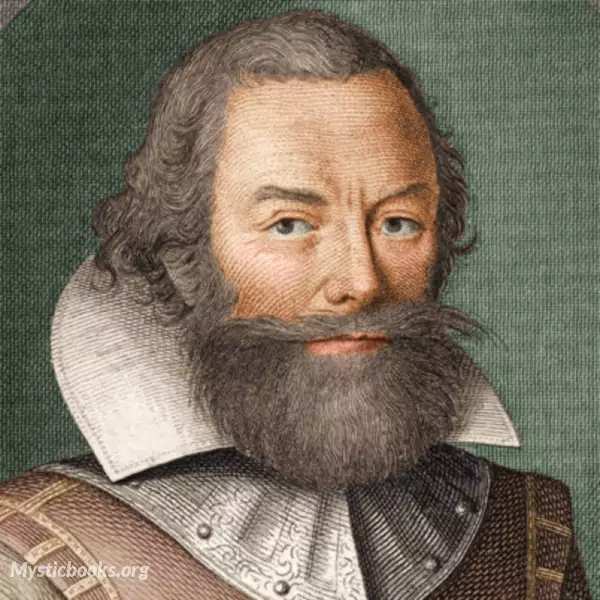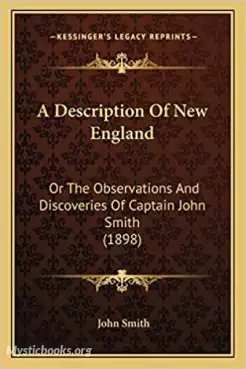
Timeline
Title
Country/Nationality
Captain John Smith
John Smith was an English soldier, explorer, colonial governor, Admiral of New England, and author. He played an important role in the establishment of the colony at Jamestown, Virginia, the first permanent English settlement in America, in the early 17th century. He was a leader of the Virginia Colony between September 1608 and August 1609, and he led an exploration along the rivers of Virginia and the Chesapeake Bay, during which he became the first English explorer to map the Chesapeake Bay area. Later, he explored and mapped the coast of New England. He was knighted for his services to Sigismund Báthory, Prince of Transylvania, and his friend Mózes Székely.
Jamestown was established in 1607. Smith trained the first settlers to work at farming and fishing, thus saving the colony from early devastation. He publicly stated, "He that will not work, shall not eat", alluding to Thessalonians. Harsh weather, lack of food and water, the surrounding swampy wilderness, and attacks from Native Americans almost destroyed the colony. With Smith's leadership, however, Jamestown survived and eventually flourished. Smith was forced to return to England after being injured by an accidental explosion of gunpowder in a canoe.
Smith's books and maps were important in encouraging and supporting English colonization of the New World. Having named the region of New England, he stated: "Here every man may be master and owner of his owne labour and land. ...If he have nothing but his hands, he may...by industries quickly grow rich." Smith died in London in 1631.
Smith's exact birth date is unclear. He was baptized on 6 January 1580 at Willoughby, near Alford, Lincolnshire where his parents rented a farm from Lord Willoughby. He claimed descent from the ancient Smith family of Cuerdley, Lancashire, and was educated at King Edward VI Grammar School, Louth from 1592 to 1595.
Smith set off to sea at age 16 after his father died. He served as a mercenary in the army of Henry IV of France against the Spaniards, fighting for Dutch independence from King Philip II of Spain. He then went to the Mediterranean where he engaged in trade and piracy, and later fought against the Ottoman Turks in the Long Turkish War. He was promoted to a cavalry captain while fighting for the Austrian Habsburgs in Hungary in the campaign of Michael the Brave in 1600 and 1601. After the death of Michael the Brave, he fought for Radu Șerban in Wallachia against Ottoman vassal Ieremia Movilă.
Smith reputedly killed and beheaded three Ottoman challengers in single-combat duels, for which he was knighted by the Prince of Transylvania and given a horse and a coat of arms showing three Turks' heads. However, in 1602, he was wounded in a skirmish with the Crimean Tatars, captured, and sold as a slave. He claimed that his master was a Turkish nobleman who sent him as a gift to his Greek mistress in Constantinople, Charatza Tragabigzanda, who fell in love with Smith. He then was taken to the Crimea, where he escaped from Ottoman lands into Muscovy, then on to the Polish–Lithuanian Commonwealth before traveling through Europe and North Africa, returning to England in 1604.
The Captain John Smith Monument currently lies in disrepair off the coast of New Hampshire on Star Island, part of the Isles of Shoals. The original monument was built in 1864 to commemorate the 250th anniversary of Smith's visit to what he named Smith's Isles. It was a series of square granite slabs atop one another, with a small granite pillar at the top. (See the postcard to the right.) The pillar featured three carved faces, representing the severed heads of three Turks that Smith lopped off in combat during his stint as a soldier in Transylvania.
In 1914, the New Hampshire Society of Colonial Wars partially restored and rededicated the monument for the 300th anniversary celebration of his visit. The monument had weathered so badly in the harsh coastal winters that the inscription in the granite had worn away.
Books by Captain John Smith

A Description of New England
A Description of New England (in full: A description of New England, or, Observations and discoveries in the north of America in the year of Our Lord 1614, with the success of six ships that went the next year, 1615) is a work written by John Smith a...